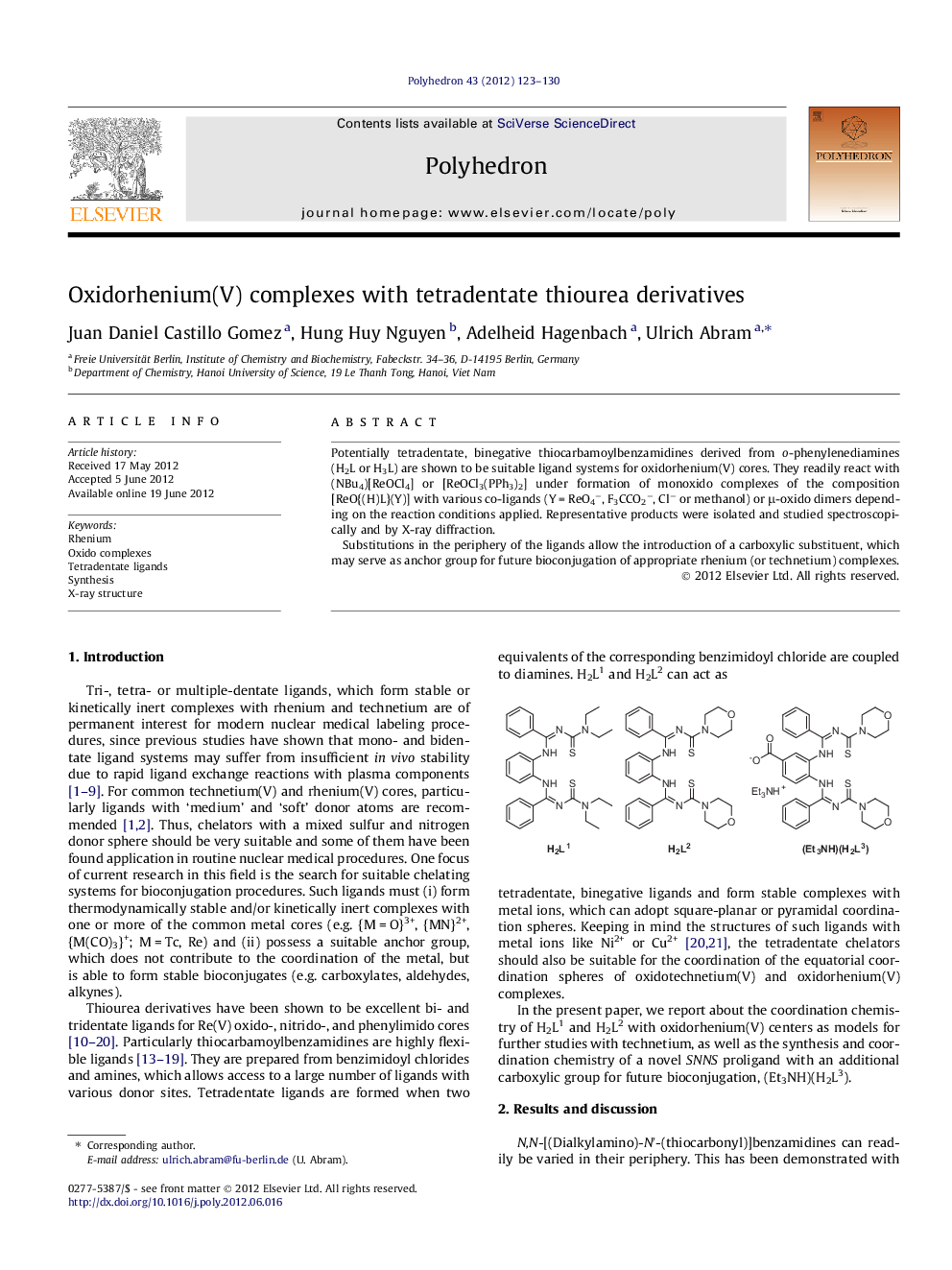| Article ID | Journal | Published Year | Pages | File Type |
|---|---|---|---|---|
| 1334767 | Polyhedron | 2012 | 8 Pages |
Potentially tetradentate, binegative thiocarbamoylbenzamidines derived from o-phenylenediamines (H2L or H3L) are shown to be suitable ligand systems for oxidorhenium(V) cores. They readily react with (NBu4)[ReOCl4] or [ReOCl3(PPh3)2] under formation of monoxido complexes of the composition [ReO{(H)L}(Y)] with various co-ligands (Y = ReO4−, F3CCO2−, Cl− or methanol) or μ-oxido dimers depending on the reaction conditions applied. Representative products were isolated and studied spectroscopically and by X-ray diffraction.Substitutions in the periphery of the ligands allow the introduction of a carboxylic substituent, which may serve as anchor group for future bioconjugation of appropriate rhenium (or technetium) complexes.
Graphical abstractPotentially tetradentate, binegative thiocarbamoylbenzamidines derived from o-phenylenediamines readily react with (NBu4)[ReOCl4] under formation of monoxido complexes. Substitutions in the periphery of the ligands may allow bioconjugation of metal complexes with suitable stability.Figure optionsDownload full-size imageDownload as PowerPoint slideHighlights► Tetradentate ligands with S,N,N,S donor sets form stable oxidorhenium(V) complexes. ► The ligands can be modified in their periphery with a carboxylic group. ► Complexes with the modified ligands are candidates for bioconjugation. ► The solid state structures of the complexes show networks of hydrogen bonds.
